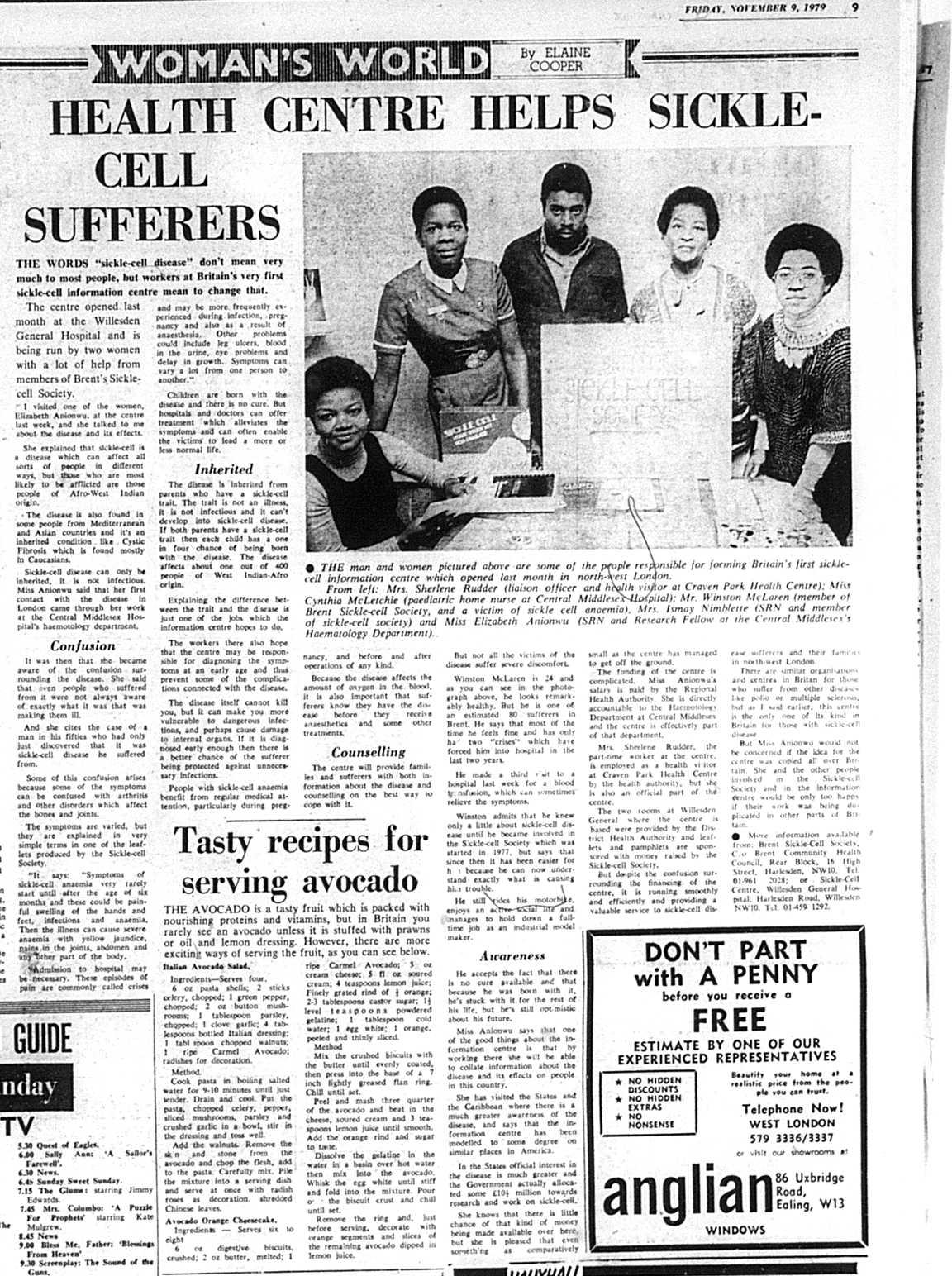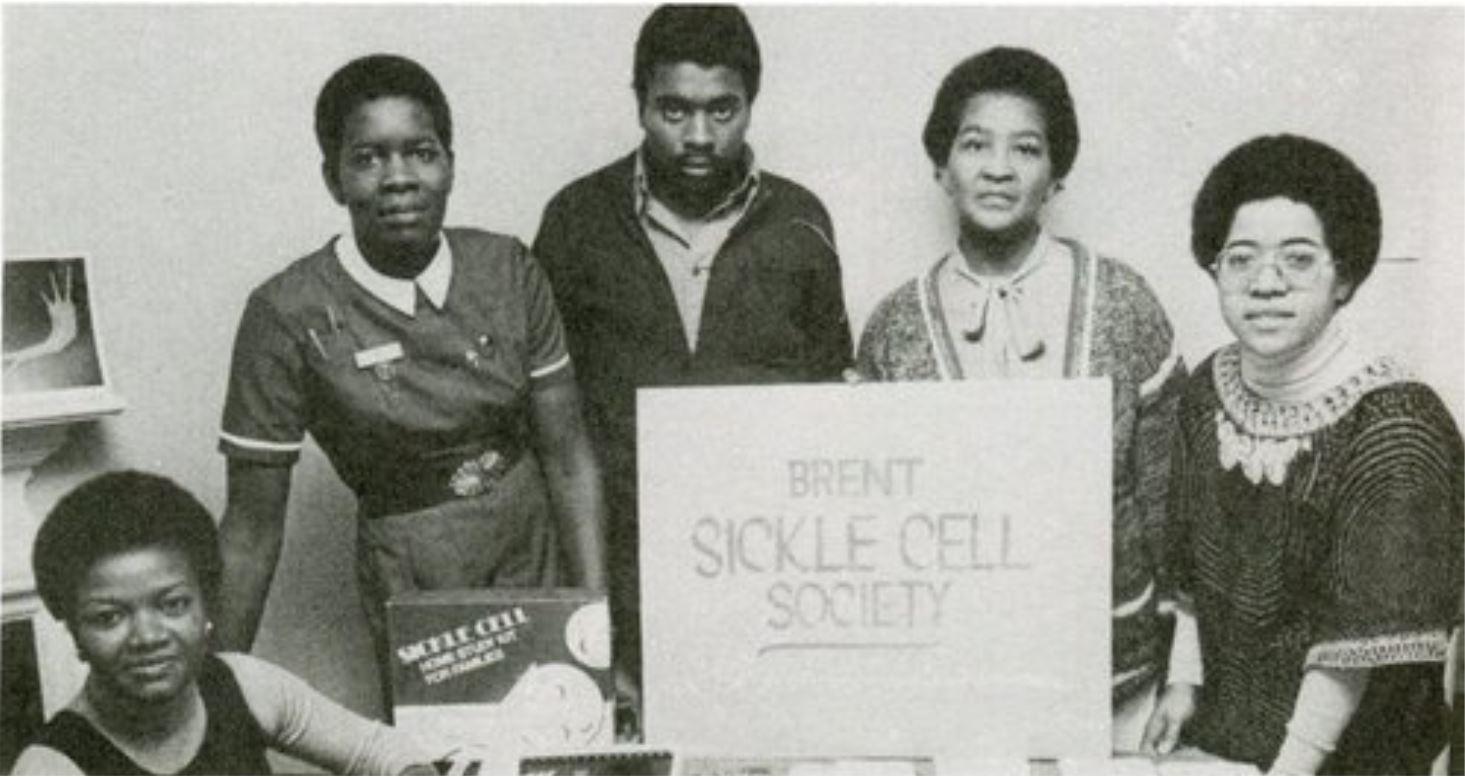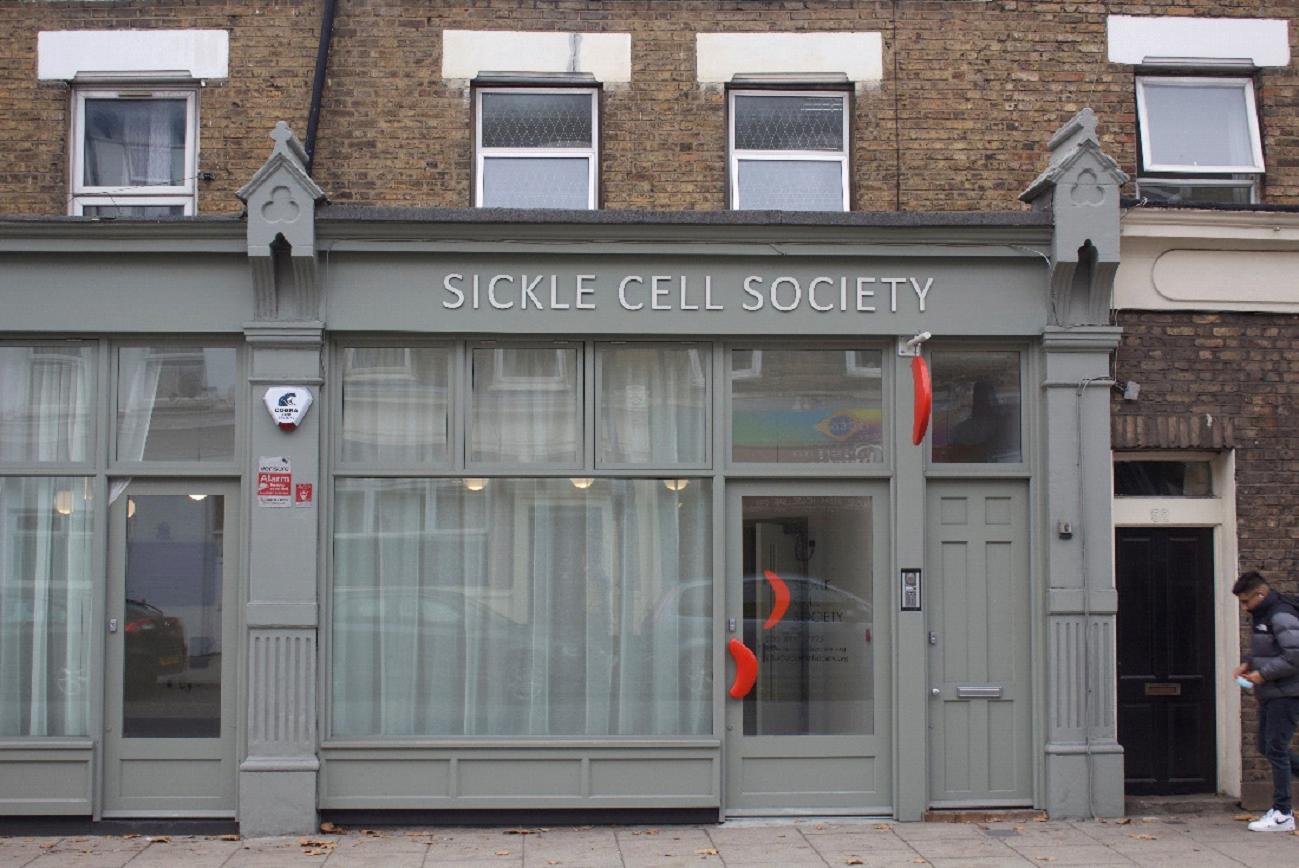Sickle Cell Society
What is Sickle Cell Disease?
Sickle cell disease is the name for a group of inherited health conditions that affect the red blood cells. The name refers to what can happen to the shape of the blood cells when someone has sickle cell disease, instead of the red blood cells looking round, they tend to look more crescent-shaped, or like a sickle (a tool used for farming with a curved blade).
The most serious type is called sickle cell anaemia. It can cause pain, increased risk of infection, and reduced levels of oxygen being carried round the body, causing tiredness and shortness of breath.
It is an inherited condition, and has a high incidence in people from African and Caribbean backgrounds, but the ‘trait’ for sickle cell can be found in many people across the world.
Why was the Sickle Cell Society set up in Harlesden?
In the interview with John James CEO of the Sickle Cell Society, he explained to Creative Researcher Atoyah Moore that the society was set up in Harlesden as it was near the Central Middlesex Hospital, which had become a main centre for treatment of the disease.

This newspaper article was written by Elaine Cooper and published in the local newspaper, the Willesden Chronicle. It announces a new the health centre in Willesden helping sickle cell sufferers.
It includes a photograph also shown below:

The photograph shows five black people who came together to form the Sickle Cell Society in North West London. Their names are Sherlene Rudder, Cynthia McLetchie, Winston McLaren, Ismay Nimblette and Elizabeth Anionwu. They are holding up a sign saying, ‘Brent Sickle Cell Society,’ later it became a national charity.


The Sickle Cell society offices in Harlesden have recently undergone refurbishment. The new design includes red, rounded crescent shaped door handles, in the shape of a ‘sickle’ cell.
In 2019 The Sickle Cell society undertook a heritage project. You can find out more about the history of the Sickle Cell Society on their website here including their Heritage Project here
You can see an online digital exhibition produced by Sickle Cell Society in partnership with the Black Cultural Archives here
With thanks to Atoyah Moore-Dingwall, John James and the Sickle Cell Society.
Find out more
Please also see Brent Museum and Archives webpages for more information on the history of Harlesden and Brent.
